The AMD 3rd Gen Ryzen Deep Dive Review: 3700X and 3900X Raising The Bar
by Andrei Frumusanu & Gavin Bonshor on July 7, 2019 9:00 AM EST** = Old results marked were performed with the original BIOS & boost behaviour as published on 7/7.
Benchmarking Performance: CPU Rendering Tests
Rendering is often a key target for processor workloads, lending itself to a professional environment. It comes in different formats as well, from 3D rendering through rasterization, such as games, or by ray tracing, and invokes the ability of the software to manage meshes, textures, collisions, aliasing, physics (in animations), and discarding unnecessary work. Most renderers offer CPU code paths, while a few use GPUs and select environments use FPGAs or dedicated ASICs. For big studios however, CPUs are still the hardware of choice.
All of our benchmark results can also be found in our benchmark engine, Bench.
Corona 1.3: Performance Render
An advanced performance based renderer for software such as 3ds Max and Cinema 4D, the Corona benchmark renders a generated scene as a standard under its 1.3 software version. Normally the GUI implementation of the benchmark shows the scene being built, and allows the user to upload the result as a ‘time to complete’.
We got in contact with the developer who gave us a command line version of the benchmark that does a direct output of results. Rather than reporting time, we report the average number of rays per second across six runs, as the performance scaling of a result per unit time is typically visually easier to understand.
The Corona benchmark website can be found at https://corona-renderer.com/benchmark
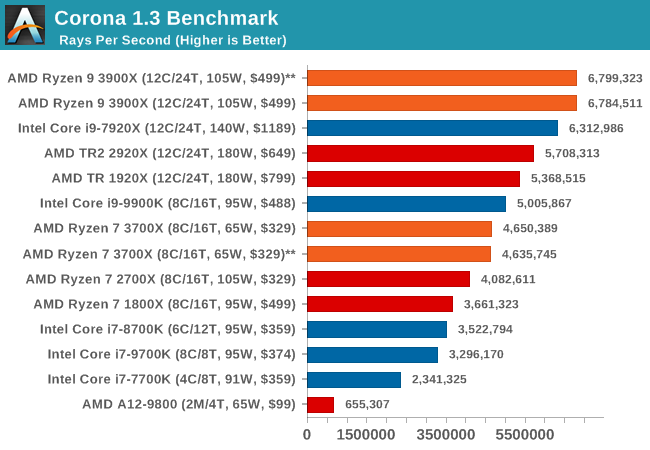
LuxMark v3.1: LuxRender via Different Code Paths
As stated at the top, there are many different ways to process rendering data: CPU, GPU, Accelerator, and others. On top of that, there are many frameworks and APIs in which to program, depending on how the software will be used. LuxMark, a benchmark developed using the LuxRender engine, offers several different scenes and APIs.

Taken from the Linux Version of LuxMark
In our test, we run the simple ‘Ball’ scene on both the C++ and OpenCL code paths, but in CPU mode. This scene starts with a rough render and slowly improves the quality over two minutes, giving a final result in what is essentially an average ‘kilorays per second’.

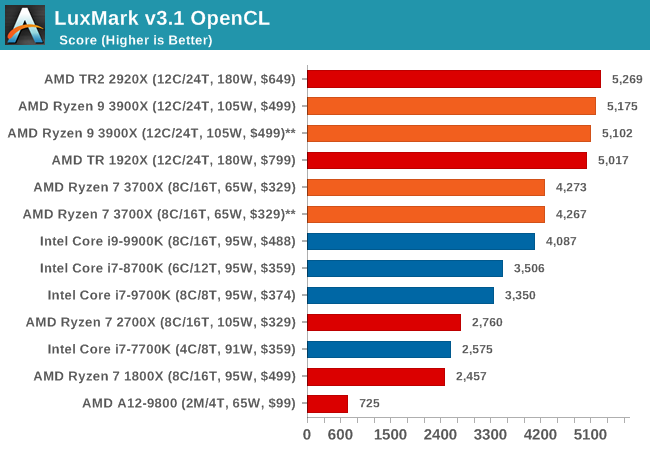
POV-Ray 3.7.1: Ray Tracing
The Persistence of Vision ray tracing engine is another well-known benchmarking tool, which was in a state of relative hibernation until AMD released its Zen processors, to which suddenly both Intel and AMD were submitting code to the main branch of the open source project. For our test, we use the built-in benchmark for all-cores, called from the command line.
POV-Ray can be downloaded from http://www.povray.org/
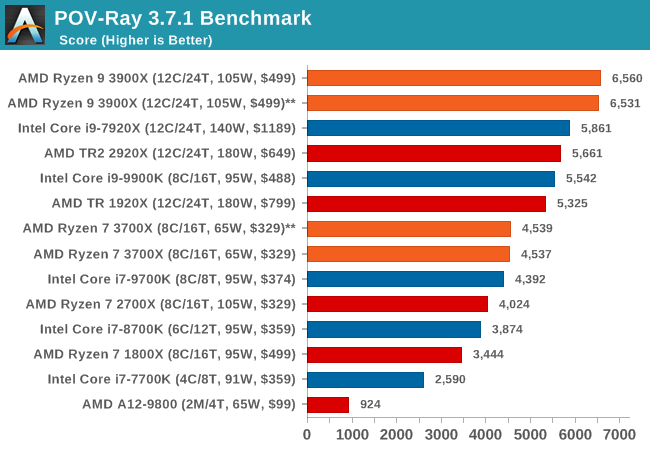
Cinebench R15
The latest version of CineBench has also become one of those 'used everywhere' benchmarks, particularly as an indicator of single thread performance. High IPC and high frequency gives performance in ST, whereas having good scaling and many cores is where the MT test wins out.
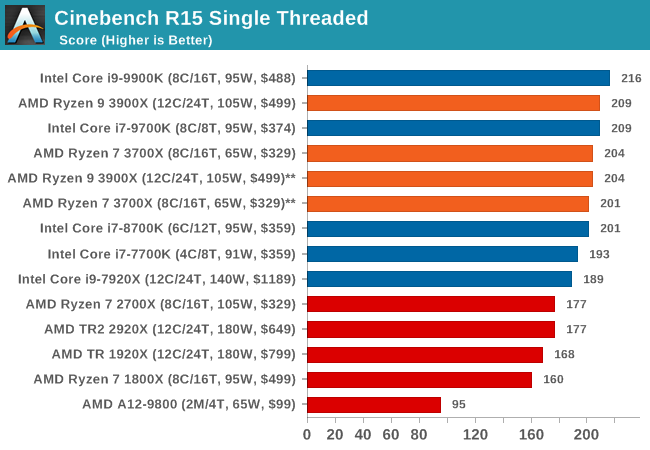
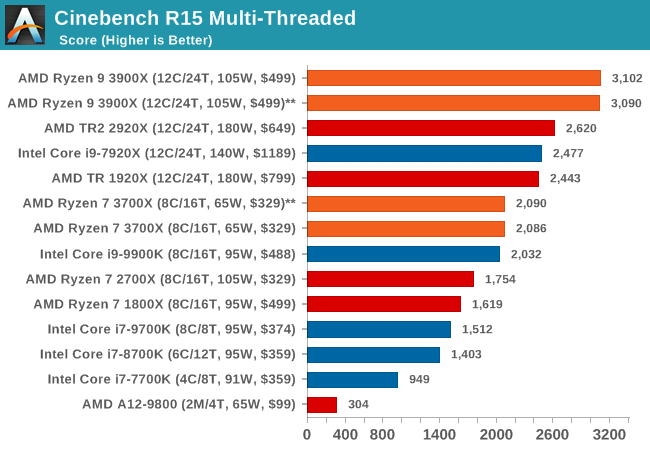











447 Comments
View All Comments
sor - Sunday, July 7, 2019 - link
Nobody has final motherboard firmwares for these. We will see what they are capable of in the coming weeks.Maxiking - Sunday, July 7, 2019 - link
Those cpus don't even POST past 4.3ghz, so no, firmware isn't the problem and never was and it never improved OC-ing, only compatibility and made systems more stable. They reached the limit of the node.Oliseo - Sunday, July 7, 2019 - link
"Those cpus don't even POST past 4.3ghz, so no, firmware isn't the problem and never was and it never improved OC-ing, only compatibility and made systems more stable. They reached the limit of the node."Like you've reached the limit of your ability to speak in a way that others can make sense of? Perhaps you need to focus on that rather than whatever multinationals are up to you're trying to defend. It will do you more good in the long term, trust that.
RSAUser - Monday, July 8, 2019 - link
Sorry what? There are benchmarks out showing 5 GHz all core on the 3900X, that is with nitrogen, but I'm expecting at least 4.8GHz possible.Intel is worse per clock than AMD with the new node, plus AMD has about 105W to play with on the 3900X to match the power usage of the 9900K on all core.
TEAMSWITCHER - Tuesday, July 9, 2019 - link
4.8GHz won’t happen.RSAUser - Thursday, July 11, 2019 - link
There are reddit posts showing 4.8 on all-core, air, you'll see more posts about that soon.DigitalFreak - Sunday, July 7, 2019 - link
@maxking So you call out trolls while being one yourself.Maxiking - Sunday, July 7, 2019 - link
The only troll here is AMD. They advertise 4,6ghz boost while reaching 4.2 ghz and 4.3 ghz max when manually OC-ed. This is called false advertising and fraud.Oxford Guy - Sunday, July 7, 2019 - link
But we'll ignore having to completely disable hyperthreading on Intel's hyperthreading-advertised CPUs.Phynaz - Sunday, July 7, 2019 - link
You keep repeating this as if by doing so it will somehow become true.